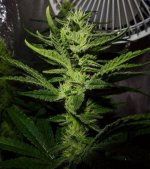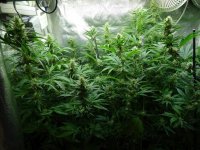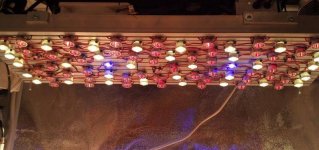Here's a early shot of xmls nw, ww + 660, 740
I'm yanking most of the 740 and adding just a few cool and royal blue leds to counter the massive stretch the reds promoted.
Otherwise plant health and quality is awesome. Pretty sure the 660 is a good addition just perhaps needs to be balanced a little with blues.
Wanted to share my results with you all, a lot of my inspiration comes from icmag.
I'm yanking most of the 740 and adding just a few cool and royal blue leds to counter the massive stretch the reds promoted.
Otherwise plant health and quality is awesome. Pretty sure the 660 is a good addition just perhaps needs to be balanced a little with blues.
Wanted to share my results with you all, a lot of my inspiration comes from icmag.








